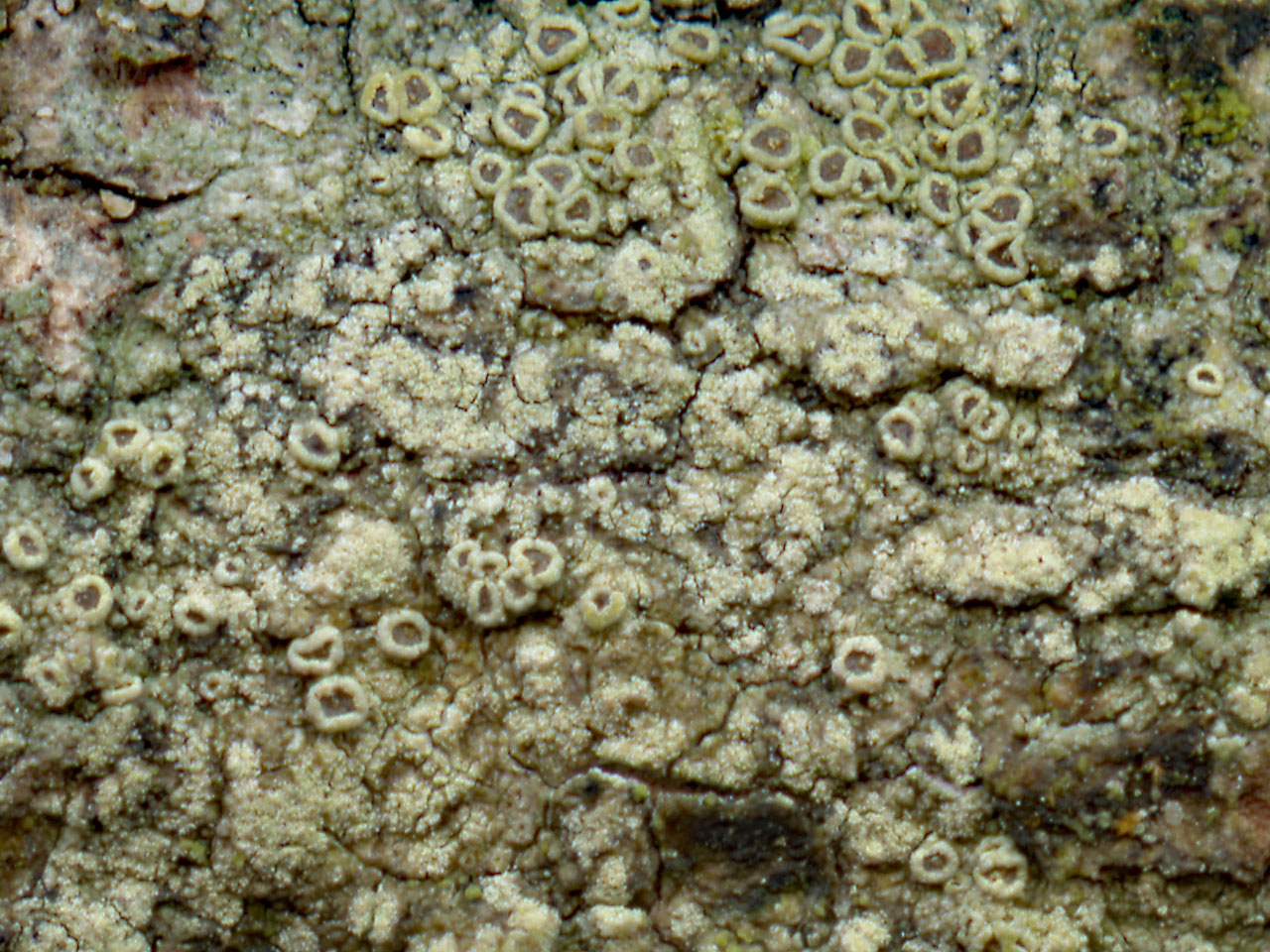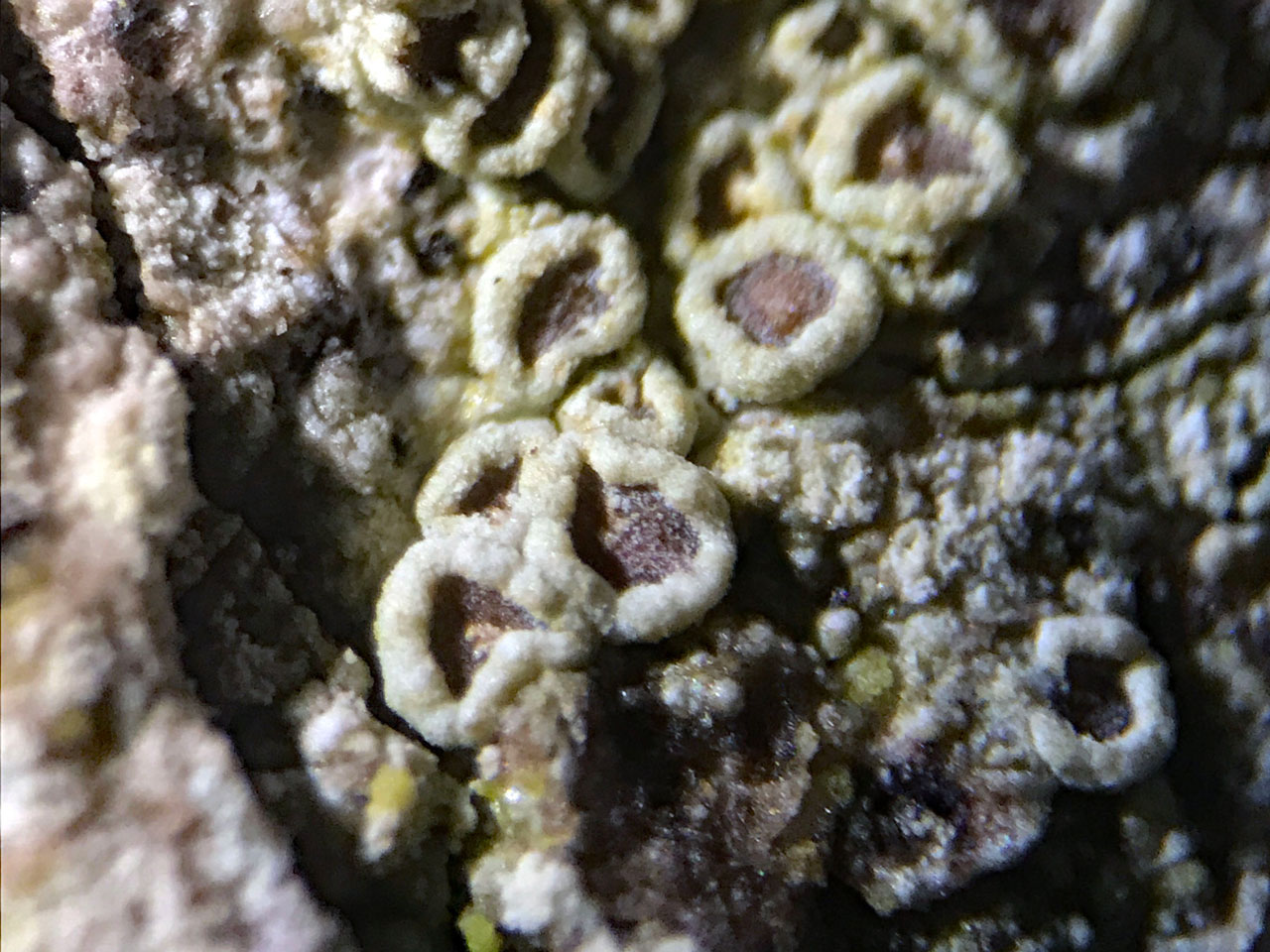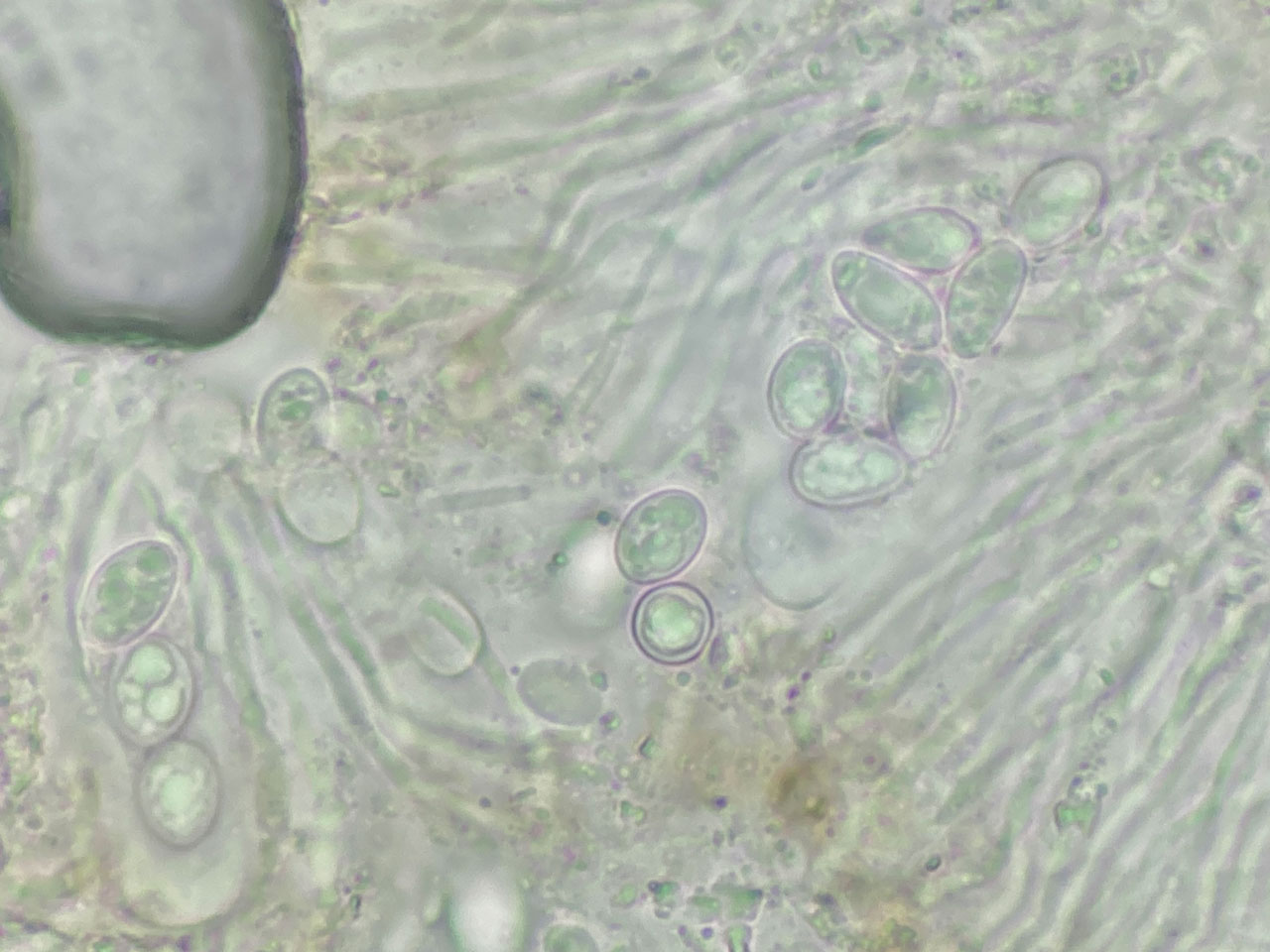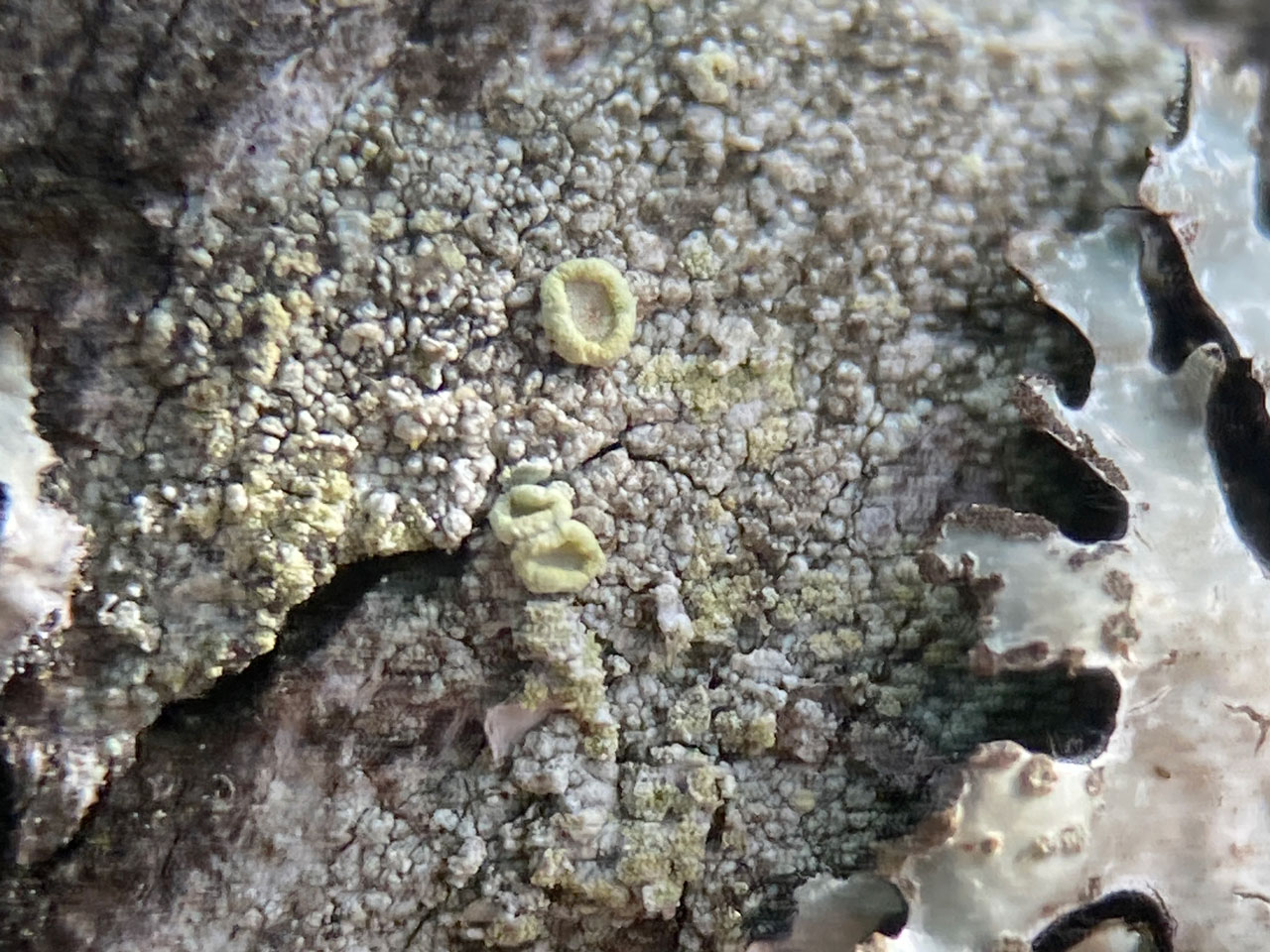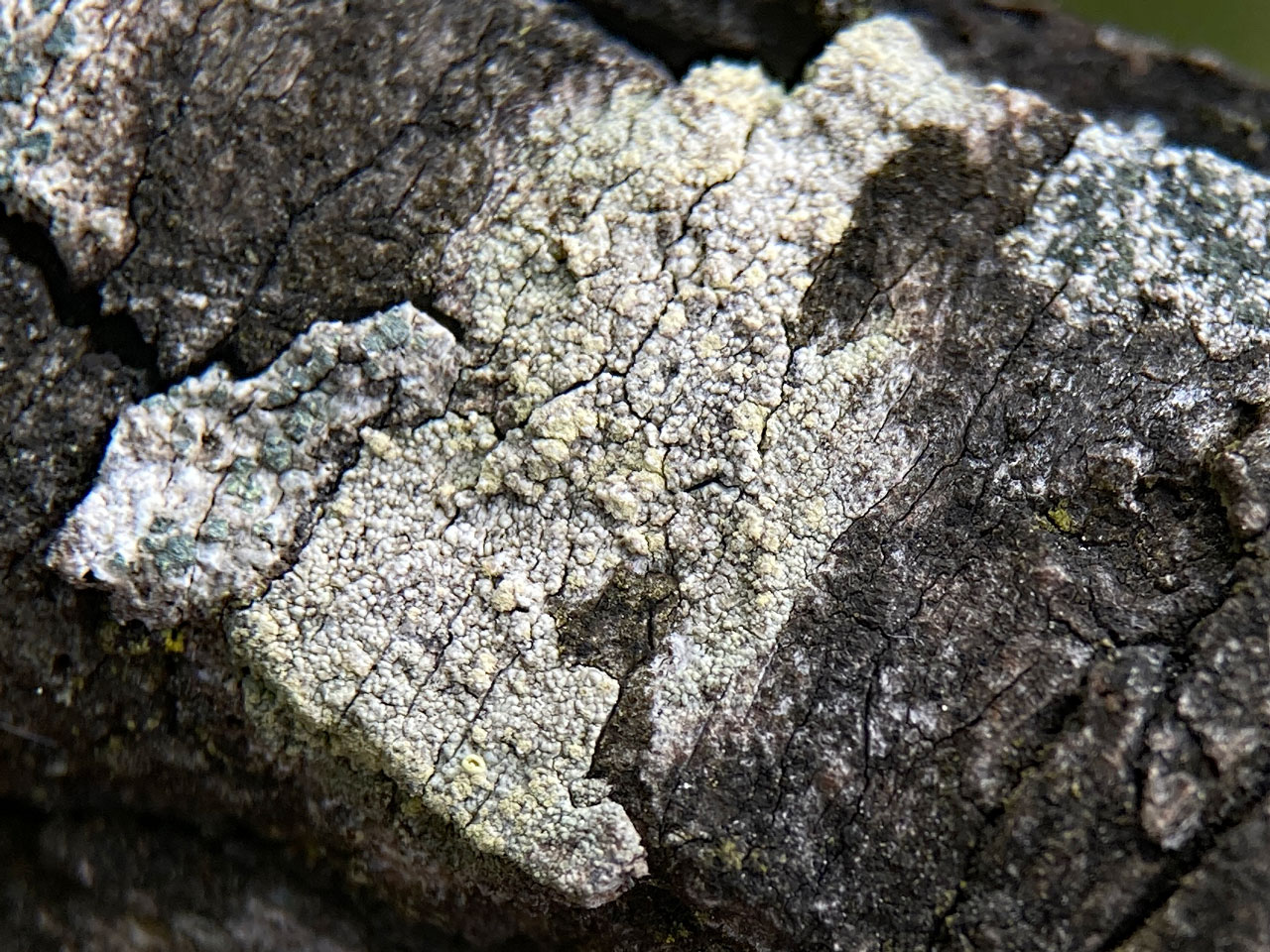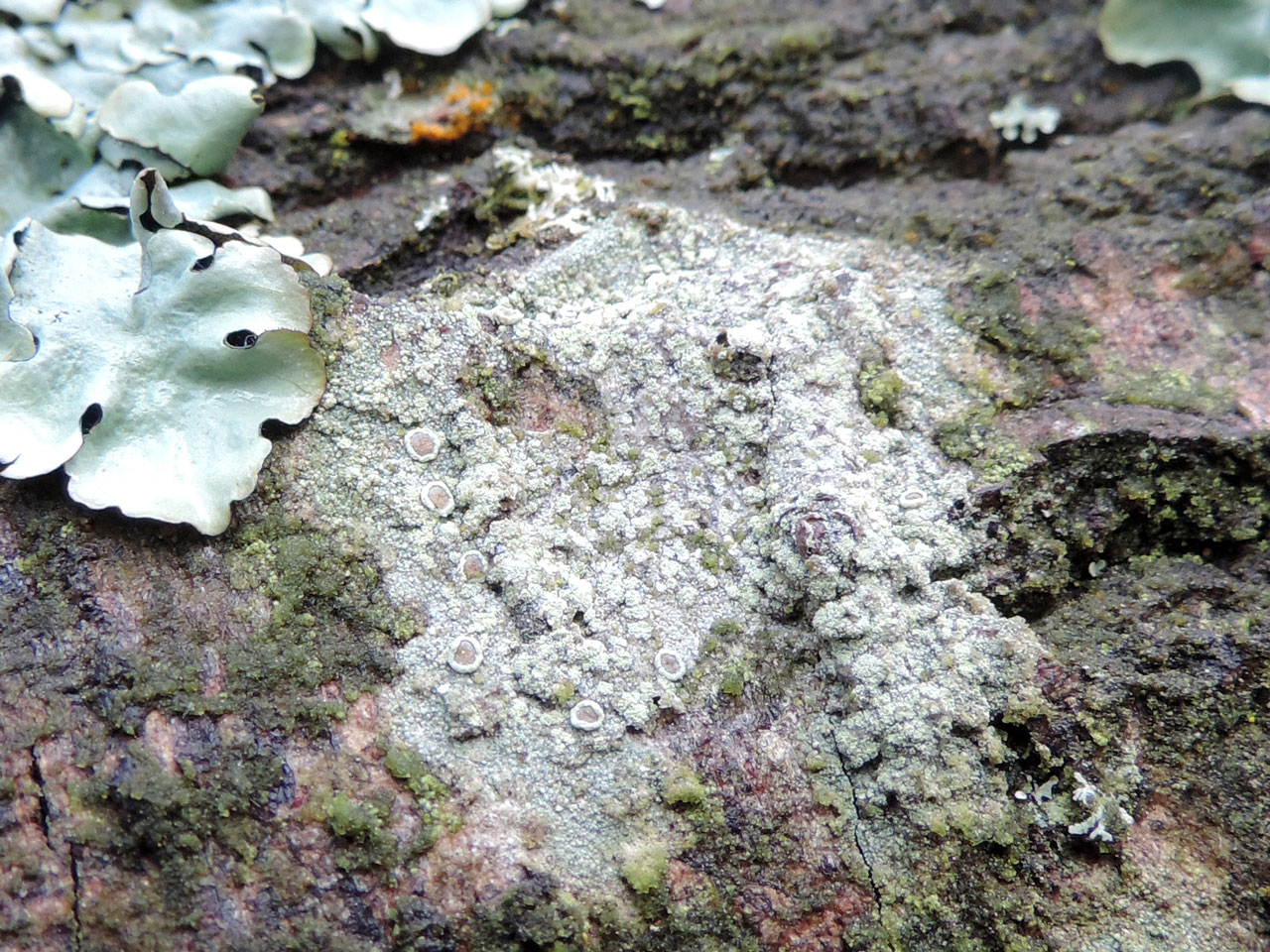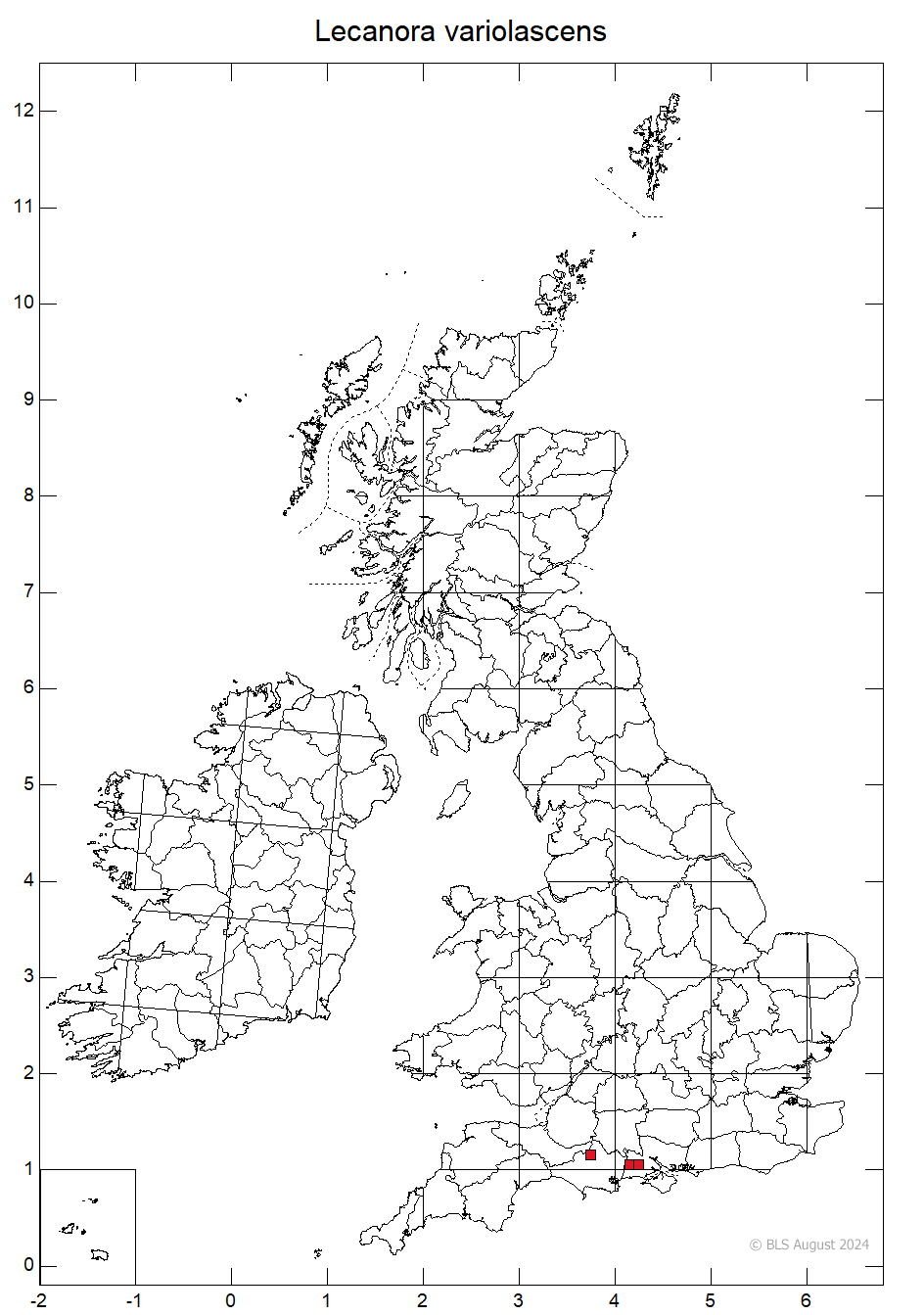Lecanora variolascens
A sorediate Lecanora species similar to Lecanora barkmaniana, but has a verrucose thallus with more delimited paler soralia, strongly pruinose apothecia discs and smaller spores. Only found in Britain in 2021 in the New Forest on slightly nutrient enriched bark in pasture woodland and heathland and should be looked for elsewhere, and an earlier 2014 photo, then identified as L. barkmaniana, from a Sallow in the Dorset heaths has been confirmed as this taxa. Thought to be generally rare in Europe.
Thallus quite variable, smooth to rough, often verrucose especially in the centre, greyish; soralia flat to slightly convex, concolorous with the thallus, at first delimited (0·3–1·0mm diam.), later more or less confluent and rarely forming a sorediate crust covering the thallus, farinose soredia. Apothecia frequently present, 0·5–1·0(– 1·5) mm diam., sessile or rarely with constricted bases, plane; discs reddish brown to dark brown, medium to strongly whitish to bluish pruinose, rarely non-pruinose; margin smooth to coarse, matt, thick, partly flexuose, elevated, sometimes slightly crenulate; epithecium reddish brown, with coarse brown granules 3–5(–8) μm diam. on the surface of paraphyses tips, soluble in K, very slowly soluble in N; thalline margin with very large crystals; hypothecium colourless to yellowish; hymenium 60–80μm high. Asci 8-spored. Ascospores broadly ellipsoid, (9·0–) 10·0–12·5 × 6–8(–9) μm. Pycnidia unknown. Disc C− ; soralia K+ yellow, Pd+ yellow, C− (atranorin, chloratranorin and zeorin).
Closely related to Lecanora barkmaniana and is physically quite similar but has a verrucose thallus with more delimited paler soralia, strongly pruinose apothecia discs and smaller spores; see Malíček et al. (2017). Sterile thalli occur but will be difficult to separate with confidence from sterile L. barkmaniana without apothecia.
On ± acidic bark but usually in slightly eutrophicated places. First idenitified in 2021, by 2023 recorded three times in the New Forest, on low Oak branch in a glade in pasture woodland, on an Oak tree in heathland and on an isolated Sallow in a mire in a pasture woodland glade. Aslo decected in a 2014 photograph from a Sallow in heathland in Dorest.

Hampshire (New Forest) and Dorset (Dorset Heaths), scattered, likely to be found elsewhere. Generally rare in Europe.
Not assessed: likely to be overlooked but does appear to be uncommon and restricted in distribution in continental Europe (Malíček et al., 2017). So far found on slightly nutrient enriched bark in uncultivated vegetation on acid soils, so may be rare in Britain but probably not threatened.
Cannon, P., Malíček, J., Ivanovich, C., Printzen, C., Aptroot, A., Coppins, B., Sanderson, N., Simkin, J. & Yahr, R. (2022). Lecanorales: Lecanoraceae, including the genera Ameliella, Bryonora, Carbonea, Claurouxia, Clauzadeana, Glaucomaria, Japewia, Japewiella, Lecanora, Lecidella, Miriquidica, Myriolecis, Palicella, Protoparmeliopsis, Pyrrhospora and Traponora. Revisions of British and Irish Lichens 25: 1-83.
Malíček, J., Berger, F., Palice, Z. & Vondrák, J. (2017). Corticolous sorediate Lecanora species (Lecanoraceae, Ascomycota) containing atranorin in Europe. Lichenologist 49: 431–455.
Text by Neil A Sanderson based on Cannon et al (2022)
